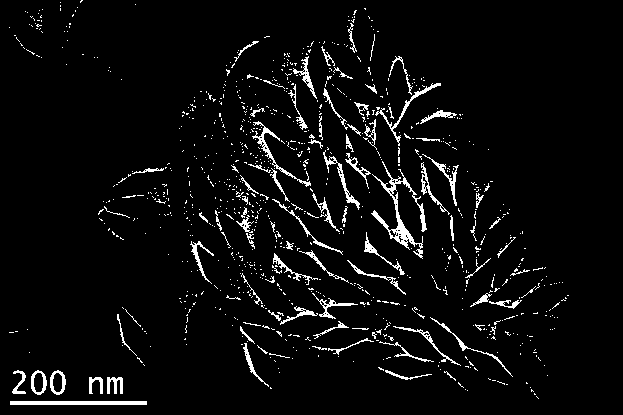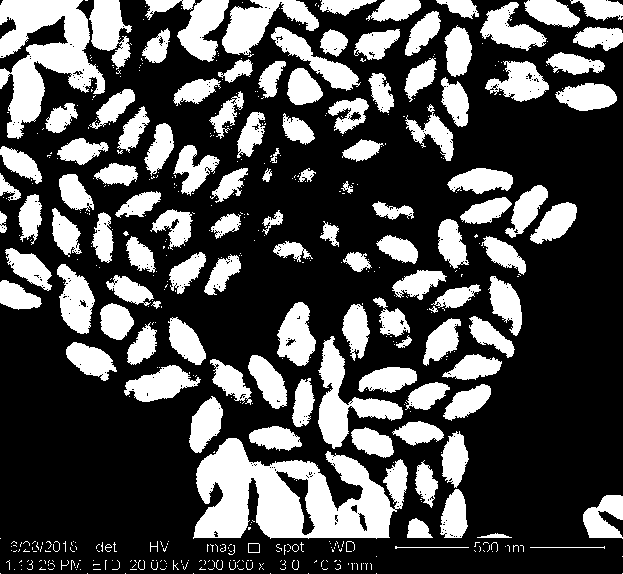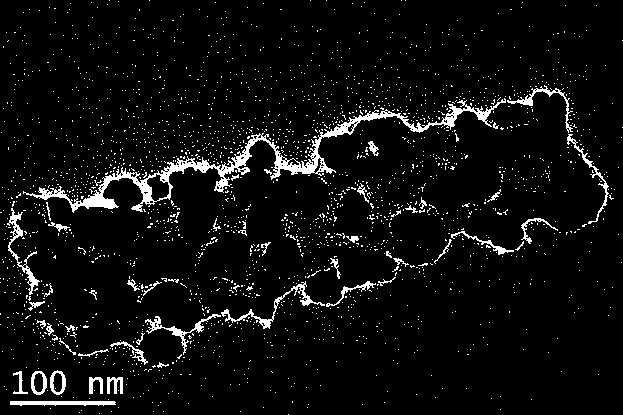Electrochemical immunosensor for detecting Alzheimer's disease markers and preparation method and application thereof
An Alzheimer's disease, immunosensor technology, applied in the field of electrochemical immunoassay and biosensing, can solve the problems of cumbersome detection methods, high cost, high detection limit, improve sensitivity and detection limit, avoid detection errors, The effect of increasing the comparison area
- Summary
- Abstract
- Description
- Claims
- Application Information
AI Technical Summary
Problems solved by technology
Method used
Image
Examples
Embodiment 1
[0044] A preparation method of an electrochemical immunosensor for detecting Alzheimer's disease markers, the steps are as follows:
[0045] 1. Preparation of gold bicone-coated platinum nanostructures
[0046] First, prepare gold nano-bicones by seed growth method, the specific steps are as follows:
[0047] Preparation of seed solution:
[0048] Add 250μL of sodium citrate (0.01M) and 125μL of HAuCl to 9.625mL of ultrapure water in sequence 4 (0.01M), 150μLNaBH 4 (0.01M) Stir well, put it at room temperature for two hours before use;
[0049] Growth solution preparation: Add 2mL HAuCl to 40mL CTAB (0.1M) solution sequentially 4 (0.01M), 0.4mLAgNO 3 (0.01M), 0.8mLHCl (1M), 0.32mL ascorbic acid (0.1M);
[0050] Add 0.5 mL of seed solution to 9.5 mL of growth solution, stir for 30 seconds, overnight at room temperature;
[0051] Centrifugal separation, disperse the precipitate in 10 mL CTAB solution (0.01M) to obtain gold nano double cones (AuBP), such as figure 1 As shown, the obtained ...
Embodiment 2
[0066] For the detection of Alzheimer's disease marker ApoE4, the steps are as follows:
[0067] (1) Use an electrochemical workstation to test with a three-electrode system, the Ag / AgCl electrode is the reference electrode, the platinum wire electrode is the auxiliary electrode, and the prepared sensor is the working electrode (the disease marker in step (5) in Example 1 The concentration of apolipoprotein E4 solution is 1ng / mL), tested in 20 mL, 10 mM phosphate buffer with pH 7.4;
[0068] (2) Use the time-current method to detect the current response value of hydrogen peroxide, the input voltage is -0.2V, the sampling interval is 0.1s, and the running time is 600 s;
[0069] (3) When the background current is stable, add 20 μL of 1M hydrogen peroxide solution to 20 mL of 10 mM phosphate buffer with pH 7.4 every 50s, and record the current change.
Embodiment 3
[0071] Performance analysis of prepared sensors
[0072] In order to evaluate the performance of the prepared electrochemical immunosensor, different concentrations of ApoE4 standards (concentrations of 0.1, 1, 10, 100, 1000, 10000, 20000 ng / mL) prepared in phosphate buffer with pH 7.4 were prepared Different immunosensors for analysis. Use the time current method to test the current change value corresponding to different concentration standards, and draw the standard curve, (such as Figure 4 As shown, ΔI=18.191LgC+200.78; R 2 =0.9841) such as Figure 4 Shown. The detection limit of the sensor of the present invention for the Alzheimer's disease marker ApoE4 is 0.03 ng / mL (S / N sex to noise ratio is 3), and the linear range is 0.1 ng / mL-2 μg / mL.
PUM
 Login to View More
Login to View More Abstract
Description
Claims
Application Information
 Login to View More
Login to View More - R&D
- Intellectual Property
- Life Sciences
- Materials
- Tech Scout
- Unparalleled Data Quality
- Higher Quality Content
- 60% Fewer Hallucinations
Browse by: Latest US Patents, China's latest patents, Technical Efficacy Thesaurus, Application Domain, Technology Topic, Popular Technical Reports.
© 2025 PatSnap. All rights reserved.Legal|Privacy policy|Modern Slavery Act Transparency Statement|Sitemap|About US| Contact US: help@patsnap.com



